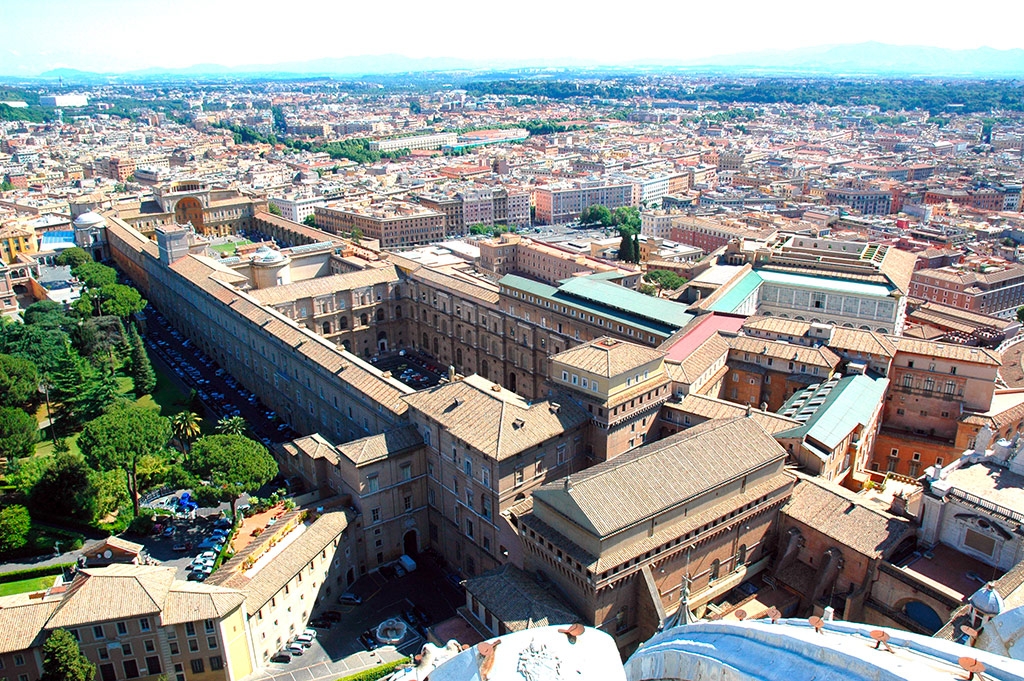Vatican City Today

With a surface area of 0.44 hectares, Vatican City State is the smallest independent State in the world, both in terms of population and territory. Its borders are marked by its walls, and in Saint Peter’s Square, by the white marble line that joins the two wings of the colonnade. In addition to its proper territory, in a certain sense the Vatican stretches to Rome and beyond Rome, to places that have the right to “extraterritoriality”.
Vatican City State arose from the Lateran treaty signed on 11 February 1929 between the Holy See and Italy, which recognized it as a sovereign state subject to International Law, created to assure to the Holy See, in its role as supreme institution of the Catholic Church, an “absolute and visible independence” and “to guarantee it indisputable sovereignty also in the international arena”, as stated in the preamble of the Treaty.
The Catholic Church carries out her evangelic mission through the particular churches and the local churches via its central government, constituted by the Supreme Pontiff and by the Bodies that assist him in exercising his responsibilities to the universal Church (Holy See).
Its form of government is an absolute monarchy. The Supreme Pontiff is the Head of State with full legislative, executive and judicial power. In sede vacante, these powers are passed on to the College of Cardinals. The legislative power is also carried out in his name, by a Commission of Cardinals and other members and headed by the Cardinal President, appointed for a five-year term. The executive power is transferred to the President of the Commission, who in this role, takes on the name of President of the Governorate and is assisted by the General Secretary and by the Vice General Secretary. The President is responsible for the Directorates and Central Offices of the Governorate, the collection of bodies and entities through which this power is exercised. Judicial power is exercised on the Supreme Pontiff’s behalf by the bodies of the judicial system
Vatican City State has its own flag, divided vertically into two: the yellow part is on the side of the flagpole while the other side is white and depicts the pontifical tiara and the crossed keys. It mints its own coins, which currently is the Euro, and issues its own postage stamps. It has a daily newspaper, L’Osservatore Romano, which was founded in 1861, and since 1931, its own radio station, Vatican Radio which transmits throughout the world in various languages.
The security of the Pope and of the State is guaranteed by the Pontifical Swiss Guard, founded in 1506, whose uniforms, according to tradition, were designed by Michelangelo, and by the Pontifical Gendarmerie Corps, which provides police services and security to the State.




